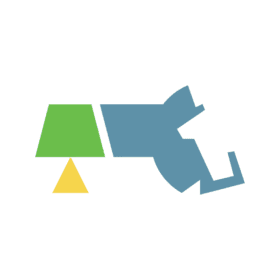May 10, 2021 Blog
Shoulder to Shoulder: The Key Ingredients…
The other day, I got a text from my daughter asking for my farro salad recipe. No problem, I thought. I was eager to help her as she prepared to host an outdoor dinner for friends. While this salad is a staple in my cooking repertoire, I realized something that took me a little by surprise: I didn’t have a set of instructions for her.
The first time I made it, I’m sure I followed a recipe from the newspaper, and it’s quite likely I modified it because I didn’t have a specific ingredient or wanted to substitute something I knew my family would like better. I understood the basics then adapted that recipe countless times afterwards and, I must admit, some results were better than others.
As I reflected on this, it reminded me that not long after launching this blog last summer, I received several inquiries from Executive Directors of nonprofits throughout the Valley asking about the Foundation’s DEI work. They wanted to know what steps we were taking and who we were working with. One person simply said, “Tell me what to do, and I’ll do it.” They wanted our recipe, and I had the same reaction I did the other day when I saw my daughter’s text—I was ready to help, and then very quickly realized I did not have the set of directions they were looking for.
When we began our DEI work in earnest last year, I think many staff and trustees (including me!) expected our consultants, Inclusive Performance Strategies (IPS), would conduct some inquiry, then present us with instructions, and, if we were to follow them carefully, we would become a more diverse, inclusive, and equitable organization. IPS, however, did not see that as their role. Staff and volunteers alike had different expectations which caused frustration and confusion. Sorting that out took time and many conversations, not easy under any circumstances but with a pandemic, virtual meetings, and a mix of staff and volunteers – new and veteran – it took longer to re-align all expectations. And when there is real urgency to the work, delays often cause increased frustration or disappointment.
Looking back, it is clear that it would have been better if I had communicated more frequently and maybe even met individually so that each person could seek clarity. We are still in the midst of this work, and while I’m not sure everyone shares the same understanding yet, we have made progress. More of us understand that IPS is our guide through a process. Their job is to help us assess our own organizational climate, identify our own strengths and weaknesses, and support us in developing a customized framework to advance DEI standards in our work and in our workplace. While IPS has been encouraging, guiding, and supporting our efforts, we must develop a training curriculum, the opportunities for dialogue, and detailed and measurable action plans ourselves. We are the ones that must learn, adjust, and adapt our systems and processes to advance equity in all our efforts. We are creating the recipe that is right for us.
While there is no singular approach to advancing diversity, equity, inclusion and belonging, there are some key ingredients and tools, and for many, expertise and guidance is required. Each business and organization, each individual, must take the measure of those ingredients differently, substitute or seek out what is missing, develop new skills and techniques, and find the right supports and coaching.
For me, the key ingredients are creativity, humility, and persistence. The main techniques I am leaning into are non-defensive listening, unwavering communication, and a dose of risk taking. I don’t get the mix right every time, but I am persistent. I will keep trying. I will keep working with my colleagues to develop our recipe, adjusting and adapting all along the way.
I texted my daughter what I could remember of the basic ingredients and process. When I asked her a few days later if she made the salad, she said, “yes, but I didn’t really follow your directions.” And isn’t that exactly the point? This work to advance equity and understanding must be creative and customized. The work meets us where we are, and then we must evolve it from there with a persistent commitment to learn, adapt, grow, change.
P.S. I may not be able to provide a step-by-step set of instructions, but I am more than happy to share some of the “ingredients” we’ve been using at the Foundation, including this list articles, podcasts, and books we have been reading, sharing and discussing. I hope you find them interesting and helpful—and I hope you will share your own list of key ingredients with us!
Trustee DEI Discussion Materials:
How to Foster True Diversity and Inclusion at Work and in your Community.
The Inclusion Imperative for Boards
White Privilege: Unpacking the Invisible Knapsack, by Peggy McIntosh – A widely read article on this topic.
The $100 Race – A video providing a visual demonstration of unearned privilege.
An MSNBC interview relating to the January 6th Capitol riot. While there is a lot to unpack, please focus on the comments of Rep. Dean Phillips.
Equality and Equity by Susan K. Gardner
How Does Implicit Bias Influence Behavior? By Kendra Cherry
We all have implicit biases. So what can we do about it? Dushaw Hockett TED Talk
Additional Links & Resources:
Darren Walker’s recent 60 Min interview (April 2021) – https://www.cbsnews.com/video/darren-walker-ford-foundation-60-minutes-2021-04-04/
Link to CEP’s session on philanthropy’s role in funding racial equity
